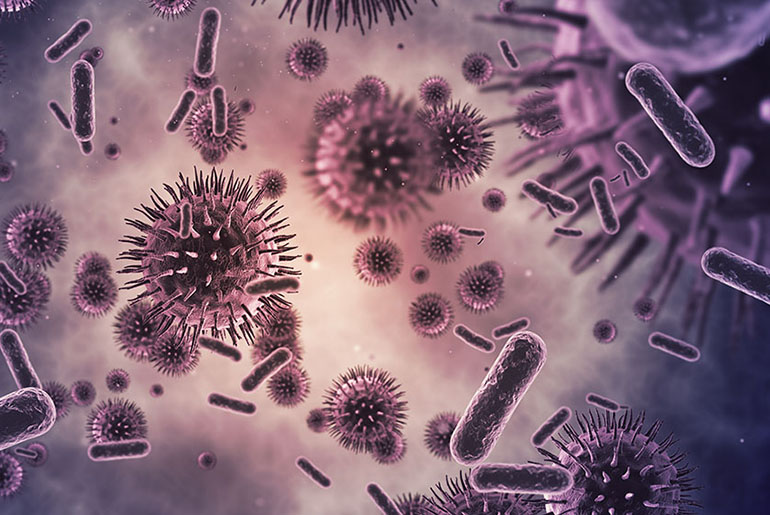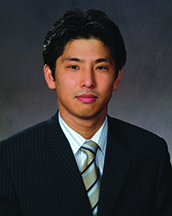
Han co-leads $15M DARPA grant to create rapid ways to test dangerous bacteria
Bacteria are microscopic organisms that thrive in diverse environments. They can live within soil, in the ocean or other water environments, and even inside the human body. Bacteria can be helpful, like recycling nutrients in the environment or helping with our digestion. But many other times they are harmful, causing diseases like pneumonia and staph infections that are difficult to treat because of lack of proper therapeutics or resistance to some antibiotics.
The functions and properties of the vast number of bacteria in the environment are unknown to us. The risk posed by these unknown bacteria is increasing as the global environment changes, populations expand and tools for genetic engineering increase, which puts the general population and especially members of the military in danger.
To combat this potential threat, the Defense Advanced Research Projects Agency (DARPA) created the Friend or Foe program, which tasks researchers to find new ways to detect these potential unknown bacterial pathogens, both natural and human-introduced, in the environment before people become ill.
Possible target environments are soil and water because they typically have millions of bacterial cells already in them, and again, no one can determine easily which ones are safe or not. Dr. Arum Han and a Texas A&M University-led research team received a grant from the DARPA program totaling more than $15 million to develop a way to quickly detect and determine which bacterial pathogens are present in a soil or water sample.

Han, professor in the Department of Electrical and Computer Engineering and co-principal investigator (PI) on the project, is working with a team to create a microdevice to rapidly and efficiently characterize the harmfulness of bacteria in the environment. They will do this by screening each microorganism in the sample, one cell at a time but very rapidly, to see if it has the properties of a pathogen. Since no one can screen millions of cells by hand, the team is working on building a microfluidic device, or microchip, to do so automatically.
While Han is developing the microchip, Dr. James Samuel (PI) and Dr. Paul de Figueiredo (co-PI) from the Department of Microbial Pathogenesis and Immunology in the Texas A&M College of Medicine will look at the microbial pathogens to determine what aspects of their harmfulness to humans or animals can be tested rapidly, using about five to 10 different criteria.
Han and de Figueiredo have been working together for the past several years on developing microfluidic devices that can measure a variety of different properties of microorganisms, so this request from DARPA was right up their alley.
According to Han, the problem with the current method is it takes too long to determine if bacteria are pathogenic or not because there are a variety of different mechanisms in which bacteria can harm a human and it can typically only detect pathogenic bacteria that are already known, but not the unknowns. It is their expectation that their new method will for the first time be able to detect unknown pathogens and also be much more time and cost-efficient.
“We came up with a microchip that allows two things: one is to first grow the unculturable cells (cells that can’t be grown using traditional means, which occupies most microbes in the environment) as much as possible, and second, we are trying to measure whether a cell is pathogenic or not without any molecular analysis,” Han said. “In other words, you directly measure whether a toxin is produced by bacteria, you directly measure whether bacteria under antibiotic treatment can survive, you test whether bacteria go inside a host cell and still survive (when they normally should die) and so on. You’re measuring directly the property of these bacteria cells in five to 10 different criteria and then combining this information to quickly determine whether a particular bacterial cell has the potential to be pathogenic or not.”
Han is also collaborating with Dr. Arul Jayaraman, the Ray B. Nesbitt Professor of Chemical Engineering, on analyzing the metabolites produced by environmental microbial consortia to come up with strategies to improve the chance of culturing the so-called “unculturable” environmental microbes so that those “unculturable” environmental microbes can also be tested for their pathogenic potential.
Han said the ultimate goal would be to have a chip that is compact, small enough to bring into a field, take an environmental sample and within a relatively short period of time, determine whether there are pathogenic microbes in that sample. This would work for natural and engineered pathogens, a task that currently can’t be done.
“Without the microchip there’s no current technology that can measure so many different traits of a bacterium and do that for millions of bacterial cells,” Han said. “We are the first ones trying to develop this new technology that will enable such analysis and detection. This is not improving on something that exists, but rather developing something that does not exist —the hardest kind of discovery and development.”
To help with different aspects of this project, the team also includes investigators from the University of Oklahoma, University of California San Francisco, the University of Virginia and the Argonne National Lab.
While it’s still in its early stages, Han believes the final product will not only benefit military personnel who are often deployed in a variety of domestic and foreign environments where their safety is a concern, but will also benefit the general population against various existing and emerging infectious diseases. Such threats also include engineered pathogens that may be introduced by adverse entities.
“If someone has engineered a strain, it’s not on our list of harmful substances because it’s unknown,” Han said. “The technology we are developing ultimately has the potential to provide an answer to an unknown microbe to determine whether they can cause harm to a human or not.”
The full team includes Han, Samuel, de Figueiredo, Provin, Jayaraman, Erin Van Schaik and Jon Mogford from Texas A&M; Adam Abate from the University of California, San Francisco; Rebecca Wattam, Allan Dickerman and Andrew Warren from the University of Virginia; James Davis from Argonne National Lab; and Jizhong Zhou from the University of Oklahoma.
